Roy’s Note: Last month we enjoyed two unique views of the Homage to Mario Barbeito tasting and dinner; one from participants on each coast. Tom’s vantage point explores how the wines interacted with the food at Quince, especially at a tasting of this historic significance. Tom flew in from Omaha, Nebraska for this magnificent Madeira event in San Francisco. He is a member of the International Wine and Food Society, Omaha Branch and a serious Madeira connoisseur.
Magical Matchups: Searching for Inspirational
Food Pairings At A
Historic Madeira Dinner
ARTICLE & PHOTOS © TOM RILEY MURNAN - 3/22/10
Have you ever tried using the same wine throughout a six-course meal? It is difficult to get the proper food/wine pairings just right if you are used to a range of whites, reds, dry and sweet wines, even if you are an experienced wine taster. But what if the youngest wine hails from 1926, and the oldest wine is an 1834? This was exactly the challenge Mannie Berk of the Rare Wine Company gave Chef Michael Tusk of the San Francisco destination restaurant, Quince: pair 12 historic Madeiras to cuisine for an evening of fine dining. To compound the challenge, there are not a lot of recipe sources for Madeira wine. The goal of a great pairing is to achieve a synergistic relationship: the wine should enhance the food, and the food magnify components in the wine. In great matches, the wine seems richer, more complex, and the farewell goes on for great lengths. The food also has components that explode with flavor. Caramel, toffee, apricot, nectarine, coffee, orange marmalade, burnt sugar, hazelnuts, prunes, raisins and figs are just some of the potential components in Madeira waiting to be enhanced by an inspired food match. The Quince staff had their work cut out for them.
The Rare Wine Company has been working closely with the Madeira house of Barbeito ever since it’s founding in 1989. As far as Madeira houses go, Barbeito is one of the youngest, having been founded only in 1946 by Mario Barbeito. Mario died in 1985, and was succeeded by his daughter. She passed the business on to her son, Ricardo Freitas, who is now the managing director. Mario made the prescient decision to buy as much old Madeira as he could while it was still available, and went around the island buying old pipes and demijohns of Madeira as the opportunity presented itself. Today, Barbeito is one of the few Madeira houses with any old stocks. However, like most other Madeira wineries, many of these historic gems are vanishing. Ricardo wanted to do homage to his grandfather, and to honor his legacy in the United States. He, along with the Mannie
Berk of the Rare Wine Co., put together this historic tasting and dinner to honor Barbeito’s founder. Ricardo brought six bottles from his grandfather’s personal cellar, and six bottles came from the inventory of the Rare Wine Company.
If you have ever tried to have a connoisseur’s meal using only one type of wine throughout, you know what a challenge it is. I once tried a meal using only Champagne, and another using only Alsatian wine. I was getting complaints from the red wine lovers towards the end of the meal. Madeiras are even more of a pairing challenge, since they are a fortified wine. We had the four usual classic varieties for dinner: Sercial (dry), Verdelho (semi-dry), Bual (mildly sweet) and Malvasia (very sweet). But a very rare grape variety was also presented: Muscat. Chef Tusk was given samples of all the wines about four days prior to the meal, and he and his sommelier David Lynch used the samples to help come up with some informed matches between wine and food.
There were 19 people in attendance, including wine writers Roy Hersh and Richard Jennings. We had the nicely appointed private dining room with brick walls and windows that looked into Quince’s long wine cellar.
The Venetian chandeliers were dimly lit, which made for difficulties in photography as well as evaluation of the wines’ color. That is why I did not include the color of the wines in my tasting notes. They did not raise the lighting until most of the meal was over. To whet the palate, before we sat down, we were served Philipponnat Champagne. That was the only non-Madeira wine served that evening. What looked to be Riedel Vinum red wine glasses, instead of Madeira chimney glasses, were used, which was a shame because the chimneys do a better job of enhancing the bouquet than a regular wine glass. Each glass had about a one-ounce pour.
Barbeito 1910 Sercial - This wine was taken out of the wood in 2004, fairly recently in Madeira terms. The shorter the time out of the wood, the more lush and less dried out the wine will be. This was sweet for a Sercial, with green apple overtones and a sharp acid whiplash. Could detect acid in the nose. 94 pts
Barbeito 1926 Verdelho - Rich, not as sharply acidic as the 1910, full, nutty, spicy with brown sugar notes. A bit more sweet than the legal limit. 94 pts
The first pairing was an Octopus Salad consisting of topary beans, cauliflower and almonds. This was paired with a 1910 Sercial and a 1926 Verdelho. Of course, the hope of each pairing was that the wine and food together should be more than the sum of its parts. With this dish, the sphere of wine was incommunicado with the world of food. The food did nothing to enhance the wine, and vise versa. Only the almonds seemed to come alive with the addition of wine, and there were not that many almonds.
Barbeito 1900 Moscatel From Mario Barbeito’s personal cellar, Ricardo brought the last of the demijohn: about 1 2/3 bottles. This wine is now extinct. Good acid balance, soft, fruity flavors especially of oranges and other citrus and some vanilla. Sweet, but not Bual or Malmsey level. On it’s own, without food: 93 pts. With the spaghetti course 98 pts.
The second course was Senatore Capelli Selezione Spaghetti (locally made) that featured clams, blood oranges, espresso and oil of albenga. This was paired with a 1900 Moscatel. This was more like it! The fruitiness and orange flavors in the Muscat supercharged the orange component in the dish, which, along with other complex flavors all were magnificently displayed. This was a superb mating of food and wine and proved to be the best pairing of the evening.
Barbeito 1907 Malvasia - Originally purchased by Mario and sold. Bottled by Ricardo from demijohns after a wine store on the island closed. The shop owner asked him if he wanted the wine returned, and Ricardo said yes. Somewhat hot on the palate from alcohol, but otherwise sweet and well balanced. Apples, nuts and treacle, with whiplash acidity in the finish. Long farewell. Powerful. 95 pts.
Barbeito 1905 Malvasia - The year of Mario’s birth, but he was never able to find a wine from his birth year while he was alive. From the south (hot) part of the island. Aged in Funchal in a warehouse with full sun exposure all day. About 120 bottles throughout the world. Ricardo was finally able to locate a small amount. Sweet and powerful, tasting of red fruits. Hot with alcohol, but otherwise wonderfully balanced. Bual sweetness level for this Malvasia. 96 pts.
Next we moved on to a Maccaroncello, which was pasta that looked like mostachole, with salsa di fiore, foie gras butter and Madeira gelée paired with 1907 and 1905 Malvasia. The gelée was like a Madeira flavored aspic, made with 5 year old Bual, which still had little cubes of sauce melting from the heat of the pasta upon presentation. Both of the wines showed wonderfully on their own, but the sauce coaxed great flavor out of the wines: nuts, prunes, and coffee.
Barbeito 1885 Verdelho - Rich, full nose with no hints of acid. Soft and very well balanced with no acid apparent on the palate. Nuts, lemon, and coffee flavors. Quite enjoyable. 96 pts.
Barbeito 1910 Bual - Originally purchased by Mario from the same area as the 1910 Sercial. No longer any vineyards in this area. Some sharp acidity on the nose, and moderately tart in the core. Burnt flavors, almonds and walnuts, red fruits. One of Ricardo’s favorites. 95 pts.
Barbeito 1914 Bual - From Mario’s personal cellar. Somewhat dry for a Bual, thinner in body and not as rich as the 1885 or 1910. Volatile acidity. Somewhat disjointed and harsh. Green apple flavors. 93 pts.
Wild Boar on a pureed celeriac base, with black trumpet mushrooms and dolce forte sauce was next. A Verdelho 1885 and two Buals from 1910 and 1914 were served. One would have thought, from reading the menu, that this would be the star of the evening, but the dish remained strangely detached from the wine, neither enhancing nor detracting from the Madeiras. The boar flaked apart as if it had been braised, but seemed overcooked and dried out. The sauce did little to awaken the wine or the boar. Only the 1914 Bual coaxed a little of the wildness out of the boar, but that was fleeting.
Barbeito 1860 Terrantez - From Mario’s personal cellar, but bottled for Ricardo’s deceased sister’s collection. No more bottles left at Barbeito. Nose somewhat closed in for me. Lush, citrus, some sharpness like quince, and green apples. Toasted almonds. Well balanced. Good length. 93 pts.
Barbeito 1882 Terrantez - From Mario’s personal cellar. Bottled from demijohn. Only 1-¾ bottles left before the tasting. The last of this wine was consumed at this dinner. Odd flavors, an earthiness in the nose perhaps. Vanilla, brick, citrus and butterscotch. Not a favorite. 91 pts.
Artisanal and Farmstead Cheeses, accompanied by complimenting breads and fruits followed the boar. The wines for this course were an 1860 and an 1882 Terrantez, both from Mario’s personal cellar. More specifically, there were four cheeses surrounding a small pile of raisins: Cassina (from Corsica); Courcham made from sheep’s milk; Tomme de Craysain (French); and Bleu de Cassa (France). All of the cheeses tended to overwhelm the Madeiras, especially the last mentioned blue cheese. The fruits and breads fared a bit better, but none hit a home run. One bread was sweet, reminiscent of zucchini bread.
Barbeito Malvasia 1875 - Darker color than usual. It is at this stage that the wine would get transferred from cask to demijohn. Green apples and acidity on the nose. Heavy body. Powerful, sweet and lush, with marmalade notes intermixed with prunes and caramel. A favorite. 96 pts.
Barbeito Malvasia 1834 - Caramel on the nose. Medium light body with sharp acidity. Somewhat dried out on the palate (i.e., not lush) for a wine that was taken from the wood and bottled in 2005. Raisins and caramel. Bual level of sweetness. Long lingering aftertaste. 94 pts.
For our culinary finale, Cremoso al Cioccolato was our dessert. The cremoso was a in the shape of a rectangular block and similar in taste to a chocolate mousse only thicker, topped by a banana citrus sorbet with a sesame tuile as a garnishment. This was paired with two Malvazias from 1875 and 1834. These were marvelous wines, sweet, and among the best of the evening. With the banana citrus sorbet and the chocolate, one would think something would match. Although the dessert didn’t detract, it also did not enhance these tremendous wines.
So how do we summarize our findings here? Out of six courses, only two wine/food pairings really shined. The remaining four were like the Hippocratic oath: First, do no harm. They were not bad matches. They just seemed to be neutral, neither enhancing nor detracting from the wine or the food.
A good analogy of food and wine pairing would be if you wanted to get to know a beautiful but shy neighbor who just moved in to your area. She may have a lot to say, but you need to figure out how to get her talking. Speaking about the weather is not going to further your relationship very fast or far. Nor is discoursing about tax law when she is finds that boring. Take the Octopus course. The wine did not bring out the brine of the sea, or even the flavors of the octopus. The cauliflower and the topary beans did absolutely nothing flavor wise for the wine or the food. In this rendition, the octopus was a fairly dense and bland meat that had little flavor on its own. There was just no synergism between the 1910 Sercial, which had flavors of green apple and a high acidity, or the 1926 Verdelho, with its nutty and brown sugar tastes, and the octopus, which was simply inert in its interaction. Our neighbor found the interaction boring.
The cheeses in the fifth course tended to coat the mouth, making it hard for the Madeira to penetrate to the palate. There was a polite conversation, but nothing to crack the neighbor’s exterior barrier. Plus, there was a very limited amount of wine in the glass. There wasn’t a lot of wine to slosh and rinse the cheese coating from the palate. The connection needed to be made quickly, and it didn’t happen. Rather like a conversation about the weather, to use our neighborly analogy. In the main course, an overcooked piece of boar and a sauce that did not even enliven the meat on its own were not going to waken the wine. I’m afraid our neighbor was bored again by another conversation that had very little interest for her, like talking about the finer points of the OSHA 1926 manual. The boar didn’t detract, but neither did it enhance. It was just there, and it couldn’t enliven the wines.
On the other hand, the best matches seemed to hone in on a flavor or a set of flavors and maximize those components. The Moscatel/Spaghetti combination was speaking our lovely neighbor’s lingo. It was as if she confided to you the details of a romantic tryst, the deepest felt longings she had, and the explosive spark that marked the encounter. That elusive spark is a mark of a great match. In this case, the orange flavors in the wine exploded when it encountered the blood oranges in the clam and spaghetti. The sum was greater than the parts. The wine became deeper, fuller and more complex with the addition of the spaghetti dish, and vise-versa. On its own, the wine was not nearly as complex or long. It was the memorable match of the evening.
It always helps, too, if you use the same kind of wine in a sauce, like the Maccaroncello course did. A similar sauce brings out similar flavors in the accompanying wine. Although you didn’t get her to talk about a romantic encounter in this course, you did succeeded in conversing about a subject our neighbor was passionate about, say her days as a soccer player.
Before I close, I would like to pass on a simple recipe I stumbled across while assembling an Italian dinner. Named Cantucci, it is an Italian biscotti made from ground-up almonds. The nuts marry seamlessly with Madeira. Madeira lovers are always on the lookout for something spectacular to pair up with their tipple and this is the ticket. See the Wine Spectator of 3-31-1997 for the recipe.
So our tally is one explosively good match, one very good match, three nice but politically correct pairings that did not bring out any passion, and one main course that just didn’t seem to work with itself let alone the wines. Considering that even though the Quince staff got to try the wines in advance, they really did not have enough wine to thoroughly explore and experiment with the pairings. These were limited, historic bottles that most people have had very little experience matching to food. Sometimes, a pairing you could swear would work, due to the ingredients, just didn’t (the dessert), showing how difficult it can be to make a good match, even if you do have samples. It was a difficult exercise for the Chef and his sommelier. There were no positively bad matches. All in all, it was a once in a lifetime experience to pair cuisine to historic Madeiras in the smart ambience that is Quince.

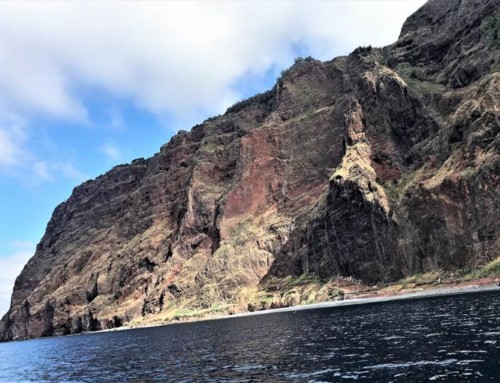
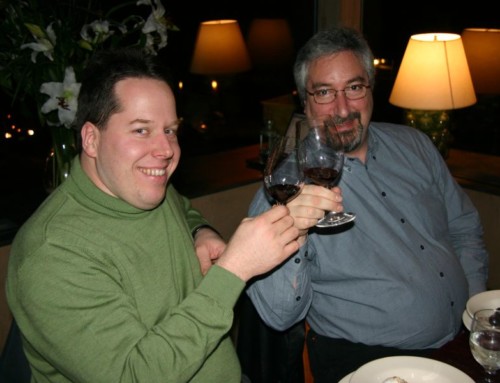
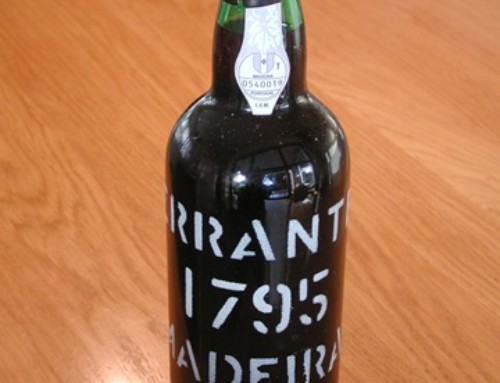
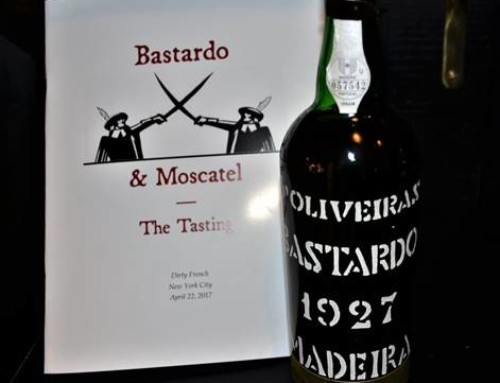
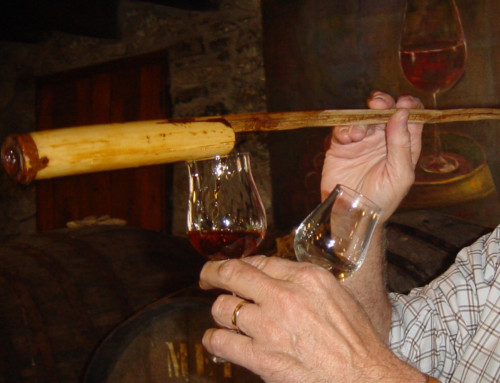
Leave A Comment
You must be logged in to post a comment.